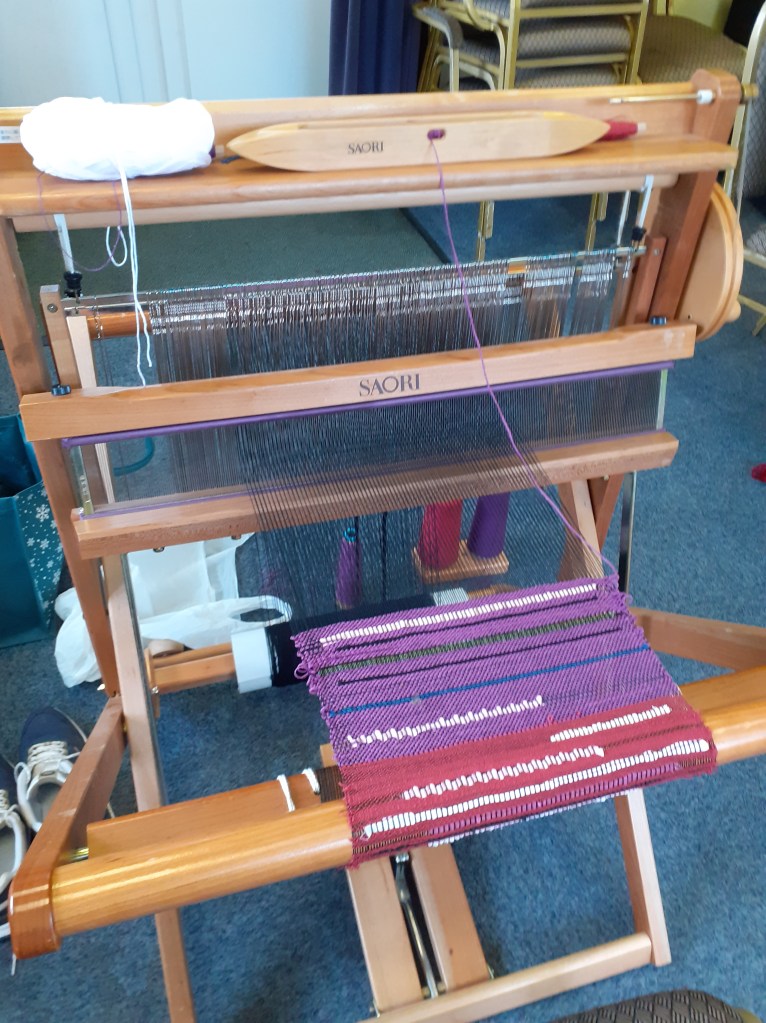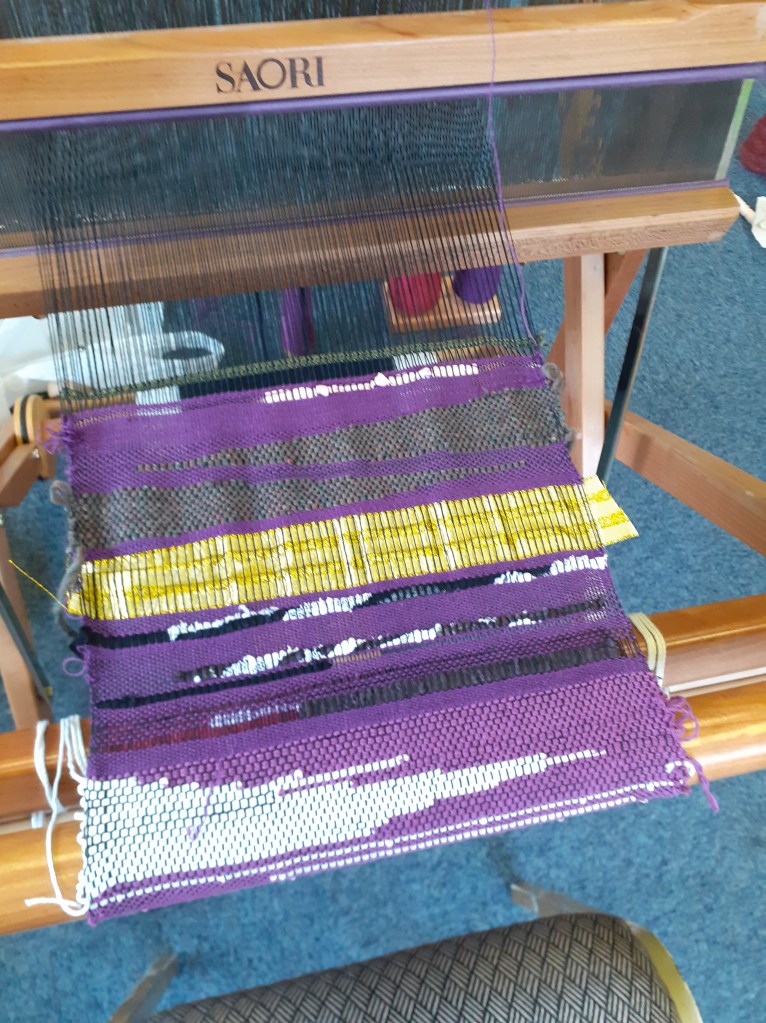Saori weaving
At last i have done a weaving course. It was in the Japanese art of Saori weaving, created round about the 1960’s. It means ‘creative weaving’. In theory there are no rules although there are 4 principles.
- Operate like a human; not like a machine
- Be bold and adventurous
- Look out through eyes that shine
- Inspire each other
The looms come from Japan, and are quite expensive, but since they come with the warp ready threaded, and the warp can be replaced with a simple roll of more thread, and they fold up sufficiently small to fit into a car, then the cost may be worthwhile.
There are five approved practitioners in the UK. Amanda Edney lives in Napton on the Hill, south Warwickshire, and runs classes at Napton Village Hall.
Hand, feet, beat.
Once you’ve got used to that, off you go! Be creative. Try anything with the warp and weft, and with the ‘treasures’ that you are encouraged to bring along. Treasures can be anything that could be threaded into the work. I took my extensive trimmings box, some left over wool and some stretchy lace fabric, which a cut into strips and twisted or plaited before incorporating into the work. You could add beads or buttons. I didn’t take any with me, but i did knot some of my trimmings to make a lumpy texture.




My output is probably about 1.5 m and took about 3 hours of actual weaving, including deciding on and preparing trimmings.
It’s a bit messy when it comes off the loom. I spent just under an hour knotting the warp threads at each end and then threading in some of the long loose ends with a bodkin. You can make a feature of the selvedge, deliberately turning it into something lacy, or just leaving it a bit messy, which was of course, part of the original design! If there ever was an original design.



So what can you do with your saori weaving when its finished? Typically the class made wall hangings, although one piece of fabric may get turned into a bag. But there are pattern books available, showing how to make waste free clothes from woven rectangles. Indeed, Amanda was wearing a dress made from one long rectangle, cut quite simply to shape. It’s apparently safe to cut the fabric as long as you stitch the seam finish before cutting. I’d be so wary of doing this, but i have to say that even my loosely woven parts around the ‘treasures’ seem to be quite robust. To some extent, that was indeed, in the original design!
Conclusion
Saori weaving made for a fun day out, and was a very creative day. I had watched some videos beforehand, so had an idea what to expect and went suitably prepared. It was my intention to use quite a lot of oddments in my trimming box, which i managed to do. My hanging will hang proudly on a wall in my new house, when i get there….
What next?
That’s a tricky one. The looms are expensive, but would seem to be much easier to store and maintain than classic looms. I’m guessing that the rolls of warp thread are also expensive. You’d have to be pretty sure that a purchased loom was going to get a lot of use. The suggestion was that we could attend day 2 of a two day workshop if we wanted to have another go and learn a little bit more. That will cost quite a bit as well. It could lead to the creation of a good 2.5m of fabric, and almost certainly, a lot of back ache! 2m in a day is probably enough. And not quite enough to make any clothes, as the fabric is quite narrow.
So what is next then?
It was probably a one off, although i am still keen to have a go at more classic weaving. I might even take my trimmings box along with me and see what they make of me adding treasures to classic weaving!










